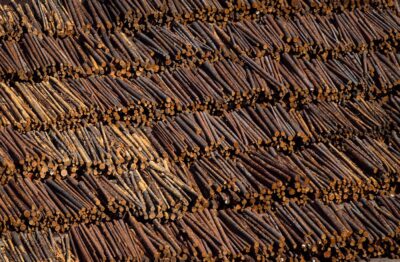Old-growth logging was ‘goal’ of Interfor: B.C. Forest Appeals Commission decision
By Canadian Press on February 19, 2025.

British Columbia’s Forest Appeals Commission has upheld a finding that forestry giant Interfor violated provincial legislation when it harvested cut blocks that overlapped with proposed old-growth management areas meant to be preserved.
The commission’s panel found Interfor committed eight contraventions of the Forest and Range Practices Act by logging between 2012 and 2016 in the Arrow Lakes area of southeastern B.C.
However, in its decision issued Feb. 13, the panel set the fine at $280,000, down from $360,000 levied by a Forests Ministry district manager in 2022.
The decision posted to the commission’s website says Interfor’s site plans for the cut blocks did not meet requirements laid out in the forest stewardship plan, including a failure to provide a rationale for logging in old-growth areas.
Instead, it says the configuration of the cut blocks “indicates that the harvesting of (old-growth management areas) was a goal for Interfor, rather than confining such harvesting to exceptional circumstances,” as required by the stewardship plan.
The decision notes the district manager who handed out the initial fine found no indication that the company based in Burnaby, B.C., deliberately ignored the requirements laid out in the plan.
Still, it says the province, which was the respondent in Interfor’s appeal, indicated the cutting into old-growth management areas were “large and excessive,” destroying about 82 hectares and causing “significant harm” to nearby habitat.
A representative of Interfor did not immediately respond to a request for comment.
The decision by the commission says Interfor acknowledged that the logging had involved old-growth management areas.
But the company claimed it had nonetheless complied with its forest stewardship plan based on its interpretation that nothing in the plan or the provincial law expressly or implicitly limited the size, extent or frequency of logging incursions into old-growth management areas.
The commission disagreed, finding the company “ought to have known” that an element of the plan allowing for the modification of old-growth boundaries in specific circumstances was meant for slight, not significant changes.
The decision further notes that in 2010, the province’s deputy chief forester issued the rationale for determining the annual allowable cut for the area.
At the time, it says the deputy noted “the retention of an appropriate area of old growth forest is a key consideration to conserving landscape-level biodiversity.”
In determining the annual allowable cut, the old-growth management areas were excluded from B.C.’s timber harvesting land base.
Based on that, the decision says Interfor ought to have known the province did not hold the view the company could log old-growth as it claimed it had the right to.
An expert called by the province to provide evidence at the appeal hearing held in January 2024 found one of the cut blocks where logging overlapped with an old-growth management area by 82 per cent contained “very large old-growth forest on one of the most productive sites … and provided exceptional biodiversity value.”
In another cut block, the decision says about 100 per cent of the logged area fell within an old-growth management area.
The estimated volume of timber harvested from the old-growth areas was about 38,000 cubic metres, with a market value of about $4.4 million.
The estimated economic benefit after subtracting the company’s costs to undertake the logging was more than $1.8 million, the decision says.
This report by The Canadian Press was first published Feb. 19, 2025.
Brenna Owen, The Canadian Press
24-23


